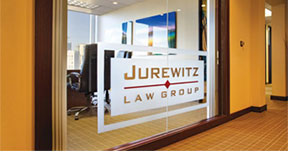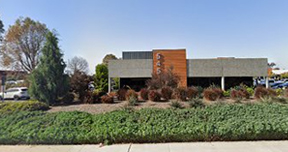Toyota and its’ executive leadership have had a tough week before a House Subcommittee investigating the nature and impact of what many believe is a serious product defect involving the gas pedal-floormat-electronic accelerator which has led to sudden acceleration of their vehicles. One of the most prominent accidents allegedly arising from this defect was the Santee auto accident which took the lives of California Highway Patrol Officer Saylor and members of the Lastrella family. That accident led to the widespread recall of Toyota floor mats.
As it turns out‚ the federal government’s investigation ignores not only its’ own involvement and complicity in allowing these widespread defects to exist but also its’ clear conflict of interest as the owner of Toyota’s main competitor for global automotive dominance: General Motors.
The federal government has long held oversight over a regulatory structure that governs the safety of motor vehicles that use America’s highways. Its’ purpose was to set basic and general safety requirements and manufacturing standards that would apply to all manufacturers. When products were later discovered to fall short of these standards‚ the government agencies and US safety regulators‚ foremost of which is the National Highway Traffic Safety Administration (NHTSA)‚ would take action including recalling vehicles from the public so that they could receive much-needed safety repairs and fixes.
In the case of Toyota, the federal government now appears to have been complicit in aiding and abetting the ongoing existence of dangerous vehicles on the roadways. For approximately a decade‚ the NHTSA has received numerous complaints about sudden acceleration in Toyota vehicles. When it became very apparent that a recall would occur‚ the government regulators bowed down in the face of pressure from Toyota who negotiated a more limited recall than the government sought with respect to the floor mats in its’ vehicles. Toyota executives then communicated internally‚ as recently discovered in an internal document‚ that they had got one over on the feds and had saved $100 million for the company.
This reduction of safety concerns to a quantifiable cost is a consistent refrain from manufacturers and‚ in particular‚ automobile manufacturers. The most infamous example was Ford Motor Company’s mathematic formula for determining when and/or if it would recall its’ Pinto line which tended to ignite upon very minor contact.
In addition to the federal government’s complicity‚ a clear conflict of interest now exists with respect to its’ oversight over the auto industry. General Motors‚ the former world’s largest automobile company‚ is now majority-owned by the federal government as part of the government’s bailout of the United States automobile industry. How can the federal government be taken seriously and not present serious doubt amongst the public when it investigates a competitor like Toyota? Even more importantly‚ how can the government investigate General Motors now that it is the primary owner? If it did‚ how could anyone take the investigation seriously with such an inherent conflict of interest? In that situation‚ many would argue that the government gave light treatment to General Motors due to its’ ownership just as many now argue that it is treating Toyota‚ a competitor‚ in a heavy handed manner.
The government’s decision to take ownership in the auto industry requires it to largely abdicate its’ oversight role. Who‚ then‚ will hold the auto industry accountable when they put profits ahead of safety? If all the manufacturer cares about is money and profit‚ the importance of plaintiffs’ trial lawyers to obtain civil judgments and even punitive damages against the manufacturer of defective products increases significantly. Reducing the harm and negative effects caused by their defective and dangerous vehicles to monetary damages–and monetary damages that are great enough to be noticed at the company’s bottom line–is one of the last ways to reign in a manufacturer’s dangerous and reckless decision to put a dangerous vehicle into the marketplace.


